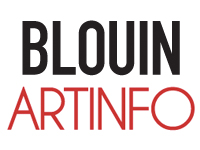
by Kris Wilton
NEW YORK-There's a temptation, when considering the work of Dusseldorf-based photographer ANDREAS GEFELLER, to place him in a German school that stretches back to August Sander and includes more recent masters such as Bernd and Hilla Becher and their many disciples.
Like these famous forefathers, Gefeller employs a rigorous approach to the medium that is grounded in technical fluency and a desire to systemize and master his content.
But while his predecessors' work was fairly uniform in appearance, Gefeller creates photos that differ widely in their effect, palette, and apparent point of reference. Though also rooted in documentary and aiming for comprehensiveness, Gefeller's pristinely rendered images are far more lyrical, often functioning more as abstract expressionism than as "realist" photo.
Working in a digital format, Gefeller painstakingly photographs a large surface inch by inch, then assembles those dozens or even hundreds of images into a large-scale composite (without otherwise doctoring them). The method is not unlike that used to compile the streetscapes on Google Earth; as a viewer, you want to both appreciate them for their comprehensiveness and to zoom in on the intricate details they capture.
The works in his current show at HASTED HUNT in New York - his second at the gallery, on view through April 25 - capture subjects as different as a sprawling floor of a local art school; a massive, graffiti-scarred Brooklyn rooftop; and the glittering blue bottom of a swimming pool. Drawn from Gefeller's series "Supervisions," the images hang together because of their shared methodology and tendency to expose pattern, but while the beach shot calls to mind the texture-driven minimal ism of Robert Ryman or Piero Manzoni, the graffitied rooftop gestures to something much less restrained.
Perhaps the most thought-provoking of the lot is Beach, Domburg, 2006, which attempts to capture waves lapping on a shore. Gefeller applies his usual method, but because the waves are in motion, it appears as if he's assembled his shots in a deliberate patchwork resembling the scramble of a poorly transmitted digital signal.
Here Gefeller recommends other work to see while in New York for this week's AIPAD (Association of International Photography Art Dealers) Photography Show, taking place at the Park Avenue Armory March 26-29.
1. American Museum of Natural History, ongoing
I was extremely fascinated by the dioramas. I had seen them in photographs before (the famous black-and-white Sugimotos for instance), but I wasn't aware that they were so old (built in 1904!), making them historical objects in themselves! Seeing them in person was more confusing than I had anticipated and far more powerful than in photographs (sorry Sugimoto). They seemed to ask the same question often apparent in photographs: At what point does the reality (the taxidermied animal and vegetable objects) end and where does fiction (the painted background) begin? (Even more complicated is that the models are not "real. ") The dioramas also seem to be a three dimensional analogy for a recurring lesson in digital photography: 00 not trust what you see in photographs!
2. Hiroshi Sugimoto at Gagosian Gallery, through February 14
Unfortunately Gagosian had already closed when I passed by, though luckily I had seen Sugimoto 's "7 Days / 7 Nights" previously in Dusseldorf. I realized later from browsing Gagosian's Web site that the exhibition design was quite different. What a pity to have missed it. The horizon of a seaside is quite possibly the simplest form of landscape, yet thanks to light and weather there are so many interesting variables.
3. Florian Maier-Aichen at 303 Gallery, through April 11
One must not attempt to understand Florian's works by looking at them on 303 Gallery's Web site. This is a series that must be seen in person! Though I had previously been introduced to his work, I was thrilled to see an entire exhibition. His works are multi-layered and difficult to grasp. There is something that connects his series with my "Supervisions": You can look at them in two different ways. From afar you get a breathtaking overview, while from up close you see confusing things - manipulations created on a computer or scratches and dust resulting from the reprographical process. They are poetic and disturbing at the same time.
4. The seaside at Montauk, Long Island
After a few stressful days in New York, my girlfriend and I went to Montauk to get some fresh air and see the ocean. I wish we'd had "7 Days / 7 Nights" like Sugimoto ...